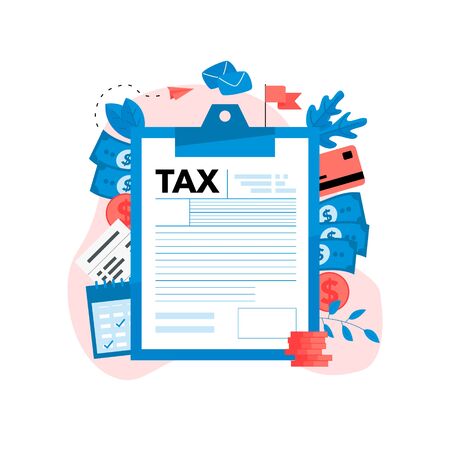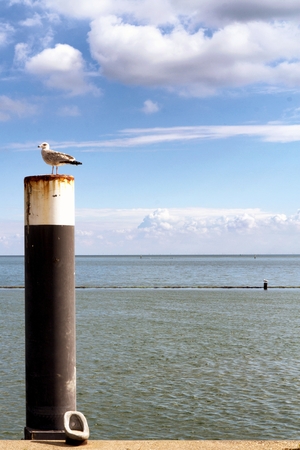1. Understanding Liability Insurance Basics
If you drive in the United States, you’ve probably heard about “liability insurance.” But what does that really mean? And why is it such a big deal for American drivers? Let’s break down the basics to make things clear and simple.
What is Liability Insurance?
Liability insurance is a type of car insurance that helps pay for injuries or damages you cause to other people and their property in an accident where you’re at fault. In most states, having liability coverage is not just a good idea—it’s the law!
Types of Liability Coverage
| Coverage Type | What It Covers |
|---|---|
| Bodily Injury Liability (BI) | Pays for medical expenses, lost wages, and sometimes legal fees if you injure someone else in an accident. |
| Property Damage Liability (PD) | Pays for repairs or replacement if you damage someone else’s car, fence, building, or other property. |
Why Do These Coverages Matter?
Accidents can happen to anyone—even careful drivers. If you’re responsible for hurting someone or damaging their stuff, the costs can add up fast. Without enough liability insurance, you might have to pay out of pocket, which could put your savings and even your home at risk.
Minimum Requirements by State
The minimum amount of liability coverage you need isn’t the same everywhere. Each state sets its own rules. Some require only a little coverage; others ask for more protection. That’s why it’s important to know what your state demands—and what might be smart to carry beyond the minimums.
2. State-by-State Minimum Liability Limits
When it comes to car insurance in the U.S., each state has its own rules about the minimum amount of liability coverage you need. This means that if you own or drive a car, the law requires you to carry at least a certain amount of coverage for bodily injury (BI) and property damage (PD) in case you cause an accident. Understanding these limits is important, especially if you’re new to driving or just starting to learn about car insurance.
What Are Bodily Injury and Property Damage Liability Limits?
Bodily injury liability covers medical expenses and lost wages for people injured in an accident you caused. Property damage liability pays for repairs to vehicles or other property you damage in an accident. States set minimum dollar amounts for each type, and these are usually written as three numbers, like 25/50/20. This means:
- 25 – $25,000 per person for bodily injury
- 50 – $50,000 per accident for bodily injury
- 20 – $20,000 per accident for property damage
Minimum Liability Limits by State (Selected Examples)
| State | Bodily Injury Per Person | Bodily Injury Per Accident | Property Damage Per Accident |
|---|---|---|---|
| California | $15,000 | $30,000 | $5,000 |
| Texas | $30,000 | $60,000 | $25,000 |
| Florida* | N/A (No BI required*) | N/A (No BI required*) | $10,000 |
| New York | $25,000 | $50,000 | $10,000 |
| Illinois | $25,000 | $50,000 | $20,000 |
| Pennsylvania | $15,000 | $30,000 | $5,000 |
| Georgia | $25,000 | $50,000 | $25,000 |
| Minnesota** | $30,000** | $60,000** | $10,000** |
| Ohio | $25,000 | $50,000 | $25,000 |
*Florida does not require bodily injury liability for most drivers but does require property damage liability.
**Minnesota also requires personal injury protection (PIP), which is not listed here.
Why Do These Limits Matter?
If youre involved in a serious accident and your insurance doesnt cover all the costs because you only have the minimum required by your state, you could end up paying out of pocket. Thats why some drivers choose to buy more than the minimum coverage. But knowing your states requirements is always the first step.
A Quick Tip for New Drivers!
If youre just starting out with car insurance or moving to a new state, check your DMV or state insurance website for the most up-to-date requirements. These numbers can change over time!
Understanding state-by-state liability limits is key when exploring how much insurance you need—especially if youre comparing costs or thinking about getting more coverage than the minimum.

3. How Liability Limits Affect You
When you’re shopping for car insurance, you’ll notice different options for bodily injury and property damage liability limits. These numbers may seem confusing at first, but they actually have a big impact on your wallet, your insurance premiums, and your responsibilities if you’re ever in an accident. Let’s break down how these limits work and what they mean for you in everyday life.
What Are Liability Limits?
Liability limits are the maximum amounts your insurance will pay if you cause an accident that injures someone else or damages their property. Every state has its own minimum required limits, but you can usually choose higher limits if you want more protection.
Common Types of Liability Limits
| Type | What It Covers |
|---|---|
| Bodily Injury (BI) | Covers medical costs, lost wages, and other expenses if you injure someone in an accident. |
| Property Damage (PD) | Pays for repairs to another person’s car or property that you damage in a crash. |
Your Finances: What’s At Stake?
If you pick the lowest required limits, your monthly premium will usually be cheaper. But if you cause a serious accident and the costs go over your policy’s limits, you could be on the hook for the rest out of your own pocket. For example, let’s say your state only requires $25,000 of property damage coverage, but you total a new car worth $50,000. Your insurance pays $25,000—and you might have to come up with the other $25,000 yourself!
Example: Comparing Liability Limits
| Limit Amount | Monthly Premium* | Your Out-of-Pocket Risk |
|---|---|---|
| State Minimum ($25k PD) | $55 | High if damages exceed limit |
| Higher Limit ($100k PD) | $70 | Lower—insurance covers more before you pay extra |
*Premiums are examples and can vary by state and insurer.
Legal Responsibilities After an Accident
If your insurance doesn’t cover all the costs from an accident you caused, the injured party could sue you for the rest. This means your savings, future earnings, or even personal property could be at risk. That’s why many people choose higher liability limits than their state requires—especially if they have assets to protect.
Quick Tips for Choosing Your Limits:
- Check what your state requires—but think about going higher if you can afford it.
- If you own a home or have savings, higher limits help protect those assets.
- Bigger limits usually mean slightly higher premiums—but much less risk if something major happens.
4. Comparing Popular State Requirements
When it comes to auto insurance, every state sets its own minimum requirements for bodily injury and property damage liability coverage. These requirements can vary a lot depending on where you live. Here, lets take a look at some of the most commonly seen minimums in states like California, Texas, and Florida—three states that are often talked about because of their size and unique laws.
Understanding the Basics
Bodily injury liability helps cover costs if you injure someone in an accident, while property damage liability pays for damage to someone else’s car or property. Each state sets a minimum limit for these coverages, usually shown as three numbers, like 15/30/5. This means:
- First number: Maximum payout per person for bodily injury (in thousands)
- Second number: Maximum payout per accident for bodily injury (in thousands)
- Third number: Maximum payout per accident for property damage (in thousands)
State-by-State Minimums: A Quick Comparison
| State | Bodily Injury Liability (per person / per accident) |
Property Damage Liability (per accident) |
|---|---|---|
| California | $15,000 / $30,000 | $5,000 |
| Texas | $30,000 / $60,000 | $25,000 |
| Florida* | N/A** | $10,000 |
*Why is Florida Different?
Florida is a bit unique because it doesn’t require drivers to carry bodily injury liability unless they have certain violations or are involved in an accident. Most drivers just need property damage liability and personal injury protection (PIP).
What Does This Mean For Drivers?
If you move from one state to another or are comparing insurance policies, it’s important to know that what counts as “enough” coverage in one place might not meet the law in another. For example, California’s property damage minimum is only $5,000—much lower than Texas’ $25,000 requirement. These differences can affect your peace of mind and your wallet if you’re ever in an accident.
5. When to Consider Higher Coverage
When you’re looking at the minimum bodily injury and property damage liability limits required by your state, it’s easy to just go with what’s legally necessary. But sometimes, the minimums might not be enough to protect you financially if something big happens. Here’s a guide on when it makes sense to choose higher coverage than your state requires.
Why Think About More Than the Minimum?
State minimums are designed to make sure everyone has at least some insurance, but they aren’t always enough to cover serious accidents. If you cause an accident that results in injuries or significant property damage, you could end up paying out of pocket for anything above your policy limits. This can get expensive fast, especially if medical bills or car repairs pile up.
Common Scenarios Where Higher Limits Make Sense
| Scenario | Why Higher Coverage Helps |
|---|---|
| You own a home or have significant assets | If damages go beyond your policy limits, your savings, home, or other assets could be at risk from lawsuits. |
| You drive in areas with high traffic or higher accident rates | More cars mean more chances for accidents and potentially bigger claims. |
| You regularly drive others (carpooling, kids’ activities) | If multiple people are injured in an accident, medical costs can quickly exceed minimum limits. |
| You want peace of mind | Knowing you have higher protection means less worry if the unexpected happens. |
| Your vehicle is expensive or new | Repairs or replacements can easily cost more than basic property damage limits cover. |
What Are Typical Coverage Choices?
Every state sets its own minimum requirements, but many drivers choose higher limits for extra security. Here’s an example of how coverage options might look:
| Coverage Type | State Minimum (Example: California) | Common Higher Limit Choice |
|---|---|---|
| Bodily Injury Liability (per person/per accident) | $15,000 / $30,000 | $100,000 / $300,000 |
| Property Damage Liability (per accident) | $5,000 | $50,000 or $100,000 |
How to Decide What’s Right for You?
- Add up your assets: Choose coverage that at least matches your net worth.
- Consider who rides with you: More passengers mean more potential costs.
- Look at local risks: Urban areas or states with high claim rates may call for more coverage.
- Think about your budget: Higher coverage does cost more each month but can save much more if a big accident happens.
If you’re unsure where to start, talk with a local insurance agent. They understand state rules and can help tailor coverage based on your needs and lifestyle.
6. Navigating Changes and Future Trends
When it comes to understanding bodily injury and property damage liability limits by state, its important to keep an eye on how things are changing. Liability requirements arent set in stone—they can be updated as laws change or as states respond to new trends. Here’s a friendly breakdown of what drivers should watch for as regulations evolve.
What’s Changing in Liability Requirements?
Over the past few years, several states have updated their minimum insurance limits. Some are raising the required amounts to better cover medical costs or property repairs, while others are reviewing how liability rules work with new technology like self-driving cars. These updates aim to make sure that accident victims get enough support and that drivers aren’t left paying huge bills out-of-pocket.
Recent State Updates
| State | Old Bodily Injury Limit (per person/per accident) | New Limit (per person/per accident) | Effective Date |
|---|---|---|---|
| Nevada | $15,000/$30,000 | $25,000/$50,000 | July 2022 |
| Maine | $50,000/$100,000 | $100,000/$200,000 | January 2023 |
| Michigan | $20,000/$40,000 | $50,000/$100,000 | July 2020 |
Why Are Limits Increasing?
The main reason is rising healthcare and repair costs. When accidents happen, medical bills and car repairs are much higher than they used to be. By increasing the minimum limits, states hope to make sure everyone involved in an accident has better financial protection.
What Drivers Should Watch For
- Check for Updates: States may announce changes at any time. Insurance companies will usually notify policyholders, but it’s smart to check your state’s Department of Motor Vehicles (DMV) website or speak with your insurance agent.
- Tighter Rules for New Tech: With more electric and self-driving cars on the road, some states are discussing special liability rules for these vehicles. If you drive one or plan to buy one soon, stay tuned for new requirements.
- Stricter Penalties: Not meeting the new minimums could mean higher fines or even suspension of your driving privileges. Make sure your policy meets current standards!
- Regional Differences: Neighboring states can have very different requirements—important if you travel across state lines often.
A Quick Glance at Upcoming Trends
| Trend | Description | Affected States/Regions |
|---|---|---|
| No-Fault Law Adjustments | Some states are rethinking their no-fault systems and may switch to traditional liability rules. | Florida, Michigan (recently changed), New York (under discussion) |
| Differentiated Limits by Vehicle Type | Larger vehicles like trucks or rideshares may need higher minimum coverage soon. | California, Texas (proposals in place) |
| Digital Proof Requirements | You might need to show proof of insurance digitally during traffic stops or registration renewals. | Most states adopting digital options since 2021+ |
The Bottom Line for Drivers: Stay Informed!
If you want to avoid surprises—and big expenses—keep an eye out for news about liability limit changes in your state. Even if your current coverage meets todays standards, regulations can shift pretty quickly. It pays to review your policy each year and talk with your insurance provider about any upcoming changes so you’re always protected on the road.


